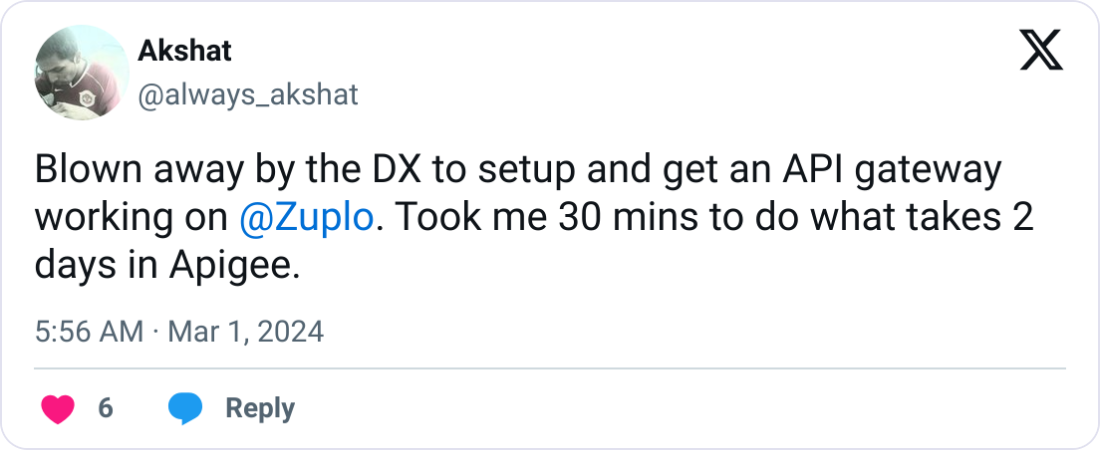API analytics isn't just fancy backend data—it's your secret weapon for creating digital products users actually love. By tracking how developers interact with your APIs, you'll uncover insights that drive smarter decisions and deliver exceptional performance that keeps users coming back for more.
With powerful API analytics in place, you're not flying blind anymore—you're measuring and understanding your APIs with precision, revealing patterns that boost functionality and accelerate growth. According to a report by TIBCO, effective API analytics increases adoption rates by 20% and reduces API-related errors by 30%. Those numbers translate directly to competitive advantage in today's API-driven world. Let's dive into how tracking user behavior can transform your API strategy and help your organization excel.
- Beyond Basic Monitoring: What Makes API Analytics Powerful
- Metrics That Matter: Key Data Points for API Success
- See the Full Picture: Advanced User Interaction Tracking
- Implementation That Works: Setting Up Effective Analytics
- Turn Insights Into Action: Practical Applications
- Overcome the Roadblocks: Solutions to Common Challenges
- The Future is Now: Emerging Trends in API Analytics
- Harnessing the Full Potential of Your API Analytics
Beyond Basic Monitoring: What Makes API Analytics Powerful#
Traditional monitoring just tells you if your API is alive. True analytics reveals how developers actually use your services, turning raw data into business intelligence that drives growth.
API analytics involves collecting raw data from API calls, processing it into structured information, analyzing patterns, and visualizing insights through intuitive dashboards. Using advanced API monitoring tools, this comprehensive approach transforms basic request logs into actionable intelligence about user preferences and behavior.
Why should you care? Because when you have solid analytics, you're making decisions based on facts, not assumptions.
Different team members benefit in different ways:
- Developers see what actually breaks: Ever noticed how developers hate chasing phantom bugs? With proper analytics, they don't have to. They can spot exactly where things fall apart, often fixing problems before users even notice them.
- Product teams get clear direction: For product folks, analytics is like having a direct line to what users actually care about. No more wondering if that feature you're obsessing over actually matters—you'll see exactly which endpoints get hammered and which ones collect digital dust.
- Executives measure real value: The C-suite doesn't care about elegant code. They want results. With solid analytics, CTOs can finally show exactly how API investments translate to business outcomes. It's the difference between saying "trust me, this API upgrade matters" and showing a dashboard where response times dropped 40% and user retention jumped 25% after your changes.
In today's competitive landscape, analytics isn't optional—it's the difference between building what you think users want and knowing exactly what they need.
Metrics That Matter: Key Data Points for API Success#

If you're not tracking these essential metrics, you're missing critical information about your API's health and user engagement. Understanding the key metrics to monitor and applying API monitoring best practices ensures you capture critical information about your API's health and user engagement. Focus on these high-impact indicators:
- API Call Volume: Your baseline pulse check. Are developers increasingly using your API or abandoning it? Track patterns over time to spot trends.
- Latency: Nobody wants a sluggish API. Measure response speed in milliseconds and obsess over keeping it low—every millisecond matters.
- Error Rate: High error rates send developers running to competitors. Monitor this carefully and treat any spike as an urgent issue requiring immediate attention.
- Availability: Is your API reliably available when developers need it? Aim for 99.9% uptime or better to maintain trust.
- Requests Per Minute (RPM): This reveals traffic patterns and helps identify unusual activity that might indicate problems or new use cases.
Google Cloud's API Dashboard exemplifies this approach with visibility into traffic, errors, and latency, allowing teams to spot issues before they impact users.
The most valuable insight often comes from tracking which endpoints get heavy use versus those collecting dust. This understanding should directly influence your product roadmap—don't waste resources improving features nobody uses!
See the Full Picture: Advanced User Interaction Tracking#
Basic metrics tell you what's happening, but advanced tracking reveals why it's happening. These deeper insights transform your understanding of how developers really use your API.
Journey Mapping: Follow the Developer's Path#
By mapping the sequence of API calls during a session, you can identify both successful workflows and frustration points. This often reveals surprising patterns—perhaps developers are calling endpoints in unexpected orders or making redundant calls due to unclear documentation.
Analyzing Complete Sessions#
Individual API calls tell you almost nothing compared to full session analysis. Metrics like session duration, calls per session, and time between requests help distinguish between successful integrations and frustrated abandonment.
When sessions consistently end after hitting a specific endpoint, that's a red flag 🚩 signaling a potential issue with that part of your API. Fix these drop-off points and watch adoption improve.
Endpoint Popularity and Conversion Paths#
Not all endpoints deliver equal value. Tracking popularity helps you:
- Prioritize optimization resources
- Highlight valuable features in documentation
- Make informed decisions about deprecation
- Design pricing tiers around high-value functionality
For APIs driving business transactions, analyzing which call sequences lead to conversions versus dead ends can dramatically increase revenue. Companies have doubled conversion rates by removing friction points identified through path analysis.
Tools like Moesif excel at tracking these complex behaviors, giving you X-ray vision into how developers interact with your API.

Over 10,000 developers trust Zuplo to secure, document, and monetize their APIs
Learn MoreImplementation That Works: Setting Up Effective Analytics#
You can't improve what you don't measure. Here's how to implement API analytics that actually delivers insights.
Choose Tools That Deliver Results#
Select an analytics platform that goes beyond basic logging to provide actionable intelligence. Solutions like Moesif, Zuplo, and Datadog offer robust capabilities that transform raw data into strategic insights.
Integration should be seamless with your existing infrastructure. Most quality tools provide SDKs or middleware that simplify implementation. For example, Moesif and Zuplo integrate to deliver real-time dashboards that highlight performance issues so you can address them proactively.
Consider data volume carefully—API calls generate mountains of information, and you need a strategy balancing detail with practicality. Cloud-based solutions typically scale well, while on-premises setups require more careful planning.
Real-time monitoring is essential in today's fast-paced environment. Looking at day-old data is like driving while only looking in the rearview mirror. Implement solutions that alert you to issues as they happen.
Capture Meaningful User Behavior#
Event tracking is your secret weapon. Don't just log calls—capture meaningful events like authentication attempts, feature usage, and error encounters.
Cohort analysis reveals patterns by grouping users with common characteristics. Perhaps enterprise users interact with your API differently than startups, or certain industries have unique usage patterns. These insights help you tailor your API to serve different segments effectively. Again, funnel analysis pinpoints exactly where developers drop off during multi-step processes. Is your authentication flow causing abandonment? Are developers giving up during complex operations? Identifying these friction points allows targeted improvements.
Respect Privacy While Gathering Insights#
Collecting user data carries serious responsibility. With regulations like GDPR and CCPA imposing hefty penalties, privacy can't be an afterthought. Here’s what to remember:
- Practice data minimization—collect only what you absolutely need. This reduces storage costs, simplifies analysis, and decreases risk exposure.
- Implement proper anonymization through hashing, tokenization, or encryption to protect user identities while still gathering valuable insights. Remember, you can learn about usage patterns without identifying specific users.
- Establish clear consent mechanisms and sensible data retention policies. Implement automated processes to purge data when it's no longer needed, and limit access to analytics through role-based controls.
Taking privacy seriously protects both users and your business—building trust with the developers who rely on your API.
Turn Insights Into Action: Practical Applications#
API analytics delivers maximum value when you apply insights to improve your product and business. Here's how to transform data into practical improvements.
Design APIs Developers Actually Want to Use#
Your API design should create experiences developers love. Analytics reveals what's working and what isn't.
- Follow the 80/20 rule: Focus optimization efforts on your most popular endpoints—typically 20% of endpoints handle 80% of traffic. This pattern gives you a clear roadmap for where to invest development resources first.
- Streamline parameters and options: Analyze which parameters developers actually use versus those they ignore. This insight allows you to simplify your API design, making it more intuitive and reducing complexity that might discourage adoption.
- Target documentation improvements: Use error rate analytics to identify exactly where developers struggle most, then enhance documentation and examples specifically for those trouble spots.
- Shape your roadmap with data: Let actual usage patterns, not just internal opinions, guide which features to enhance, deprecate, or create next. This ensures your development efforts align with real developer needs.
Make Your API Lightning Fast#
Slow APIs lose users quickly. Analytics helps you increase API performance by identifying and eliminating performance bottlenecks before they drive developers away.
- Map geographic performance variations: Latency tracking across regions reveals where your API shines and where it struggles. If it's fast in North America but slow in Asia, you can strategically add regional endpoints or implement localized caching.
- Allocate resources precisely: Instead of overprovisioning everywhere, analytics allows you to target infrastructure investments exactly where needed. This optimizes costs while maximizing performance where it matters most.
- Implement intelligent rate limiting: Different customers and endpoints have different traffic patterns. Analyze actual usage to create rate limits that protect your infrastructure while accommodating legitimate usage spikes. Zuplo's API gateway provides real-time monitoring that enables this level of nuanced optimization.
- Identify slow-performing queries: Pinpoint which specific API calls consistently underperform, then optimize those database queries, caching strategies, or backend processes for maximum impact.
Turn Your API Into a Revenue Engine#
Your API isn't just technical infrastructure—it's a product that can drive significant revenue. Analytics provides the insights needed to monetize effectively while keeping developers happy.
- Design fair, profitable pricing tiers: Usage-based pricing models work best when informed by actual usage patterns. Analyze call volumes, data transfer, and endpoint popularity to create pricing that feels fair while maximizing revenue.
- Identify premium feature candidates: High-usage endpoints that deliver clear value are perfect candidates for premium tiers. Analytics shows exactly which features developers find most valuable and might pay extra to access.
- Segment customers strategically: Different user groups interact with your API differently. Enterprise users might value stability and support, while startups prioritize flexibility and low entry costs. Analytics lets you create targeted offerings for each segment.
- Measure monetization impact: Track how pricing changes affect usage patterns and revenue. Moesif's API analytics platform includes features designed specifically for monetization, making it easier to translate insights into revenue growth.
Enhance Developer Experience#
The developer journey from discovery to mastery significantly impacts API adoption. Analytics provides visibility into this journey, helping you eliminate friction points and create smoother pathways to success.
- Optimize onboarding flows: Time-to-first-call metrics show how quickly new developers go from signup to successful implementation. If this metric is high, your onboarding process likely needs streamlining. Companies that optimize this pathway see up to 60% higher developer retention in the critical first month.
- Improve documentation strategically: Analyze which documentation pages receive the most traffic and time-on-page to identify areas that need clarification or expansion. Focus your technical writing resources where developers actually need help.
- Address common failure patterns: Identify sequences of API calls that frequently lead to errors or abandonment, then proactively improve those workflows through better examples, clearer error messages, or redesigned interfaces.
- Connect support tickets to usage data: Monitor correlations between support requests and specific endpoints or errors to proactively improve documentation and code samples for problematic areas. This reduces support costs while improving developer satisfaction.
Build Better API Versioning Strategies#
API versioning is challenging, but analytics makes it manageable by providing visibility into how developers adopt, resist, or ignore your versioning strategy.
- Time deprecation decisions properly: By tracking which versions are actively used and by whom, you can make informed decisions about when to retire older versions without disrupting important customers.
- Identify migration obstacles: Migration pattern analysis helps pinpoint why developers might resist moving to newer API versions. Perhaps certain features in the old version aren't adequately replaced, or the migration path isn't clear enough in your documentation.
- Target communication effectively: Generic deprecation announcements often get missed. When you know exactly which customers are using soon-to-be-deprecated endpoints, you can reach out personally with migration assistance tailored to their specific usage patterns.
- Measure version adoption velocity: Track how quickly developers adopt new versions after release. Slow adoption might indicate issues with your communication strategy, migration tools, or the new version itself.
Overcome the Roadblocks: Solutions to Common Challenges#

Implementing API analytics isn't always smooth sailing. Here are the common obstacles you'll face and how to get past them quickly.
Data Overload#
APIs generate mountains of data that can quickly overwhelm your systems and analytics tools. Your logs fill up fast, and before you know it, you're drowning in information without extracting useful insights.
Solution: Implement intelligent sampling that captures representative data while reducing volume by 90% without sacrificing insight quality.
Inconsistent Data Formats#
When different API versions and services produce data in varying formats, your analysis becomes fragmented and unreliable. This inconsistency makes it nearly impossible to build unified dashboards or draw accurate conclusions across your entire API ecosystem.
Solution: Implement standardized logging protocols and data transformation pipelines to normalize information before it hits your analytics platform.
Technical Team Resistance#
Developers and engineers often view analytics implementation as just another overhead task that takes time away from building features. This resistance can slow adoption and reduce the effectiveness of your analytics program.
Solution: Demonstrate quick wins by showing how analytics identified a critical performance issue or revealed a feature opportunity that would have otherwise been missed.
Legacy System Limitations#
Older systems typically lack built-in instrumentation for proper analytics, making it difficult to get visibility into how users interact with established APIs. Retrofitting these systems for comprehensive analytics can seem prohibitively complex.
Solution: Instead of complete rewrites, implement API gateways or middlewares that can capture analytics data without modifying existing code bases.
Cross-System Complexity#
When your architecture spans multiple systems and technologies, consolidating analytics data becomes extremely challenging. Different components speak different languages, creating data silos that prevent a unified view of your API ecosystem.
Solution: Adopt event-driven architecture using tools like Apache Kafka that processes data as it happens and scales beautifully without creating bottlenecks.
The Future is Now: Emerging Trends in API Analytics#
The analytics landscape is evolving rapidly. Here's what's coming next and how to prepare.
AI Takes API Intelligence to New Heights#
The future of API analytics isn't just reporting what happened—it's predicting what will happen next. Advanced AI models now anticipate usage patterns with remarkable accuracy, enabling proactive optimization before problems occur. Platforms like Rakuten SixthSense already use AI for distributed tracing and threat detection, showing just how powerful these tools have become for modern API management.
Unified Analytics Platforms Transform API Management#
The fragmented analytics landscape is consolidating into comprehensive platforms that track everything from performance metrics to business outcomes in one place. These unified solutions eliminate data silos by integrating information from across your entire technology stack. Modern dashboards now adapt to different stakeholders—letting developers, product managers, and executives see the same data through lenses relevant to their specific roles.
Federated Machine Learning Enhances Privacy#
Privacy-preserving analytics is evolving through federated learning approaches that gather insights without collecting sensitive data centrally. By training models across distributed data sources, organizations can analyze API interactions without raw data ever leaving secure environments. The most sophisticated implementations now use differential privacy techniques that mathematically guarantee user confidentiality while still allowing meaningful analysis—crucial for APIs handling sensitive information.
Your Next Steps#
- Start with focused investments in AI-driven observability tools that integrate with your existing infrastructure.
- Implement automated testing frameworks that incorporate analytics data, focusing first on your most-used endpoints.
- Begin with basic predictive capabilities through trend analysis before advancing to more complex models.
- Build analytics expertise across your team with role-specific training—technical implementation for developers, interpretation skills for product managers.
- Create a structured feedback loop where analytics insights directly inform your development priorities and business decisions.
Harnessing the Full Potential of Your API Analytics#
In today's API-driven world, tracking metrics like call volume, response times, and user patterns empowers you to continuously improve. This isn't just about technical performance—it's about creating experiences that make developers choose your platform over alternatives.
Take an honest look at your current analytics approach. Are you getting real-time insights? Can you see how users actually behave with your API? If not, you're operating with a significant disadvantage while your competitors leverage data-driven decision making. Remember, effective analytics isn't about drowning in data—it's about extracting insights that drive meaningful improvements. Whether you're a developer in the trenches, a product manager planning the roadmap, or a CTO setting strategy, robust API analytics will validate your decisions and guide your direction.
Ready to transform your API strategy with powerful analytics capabilities? Sign up for a free Zuplo account today and discover how our developer-friendly tools can help you gather, analyze, and act on crucial API usage data—turning insights into competitive advantage and delighting your users with APIs that truly meet their needs.